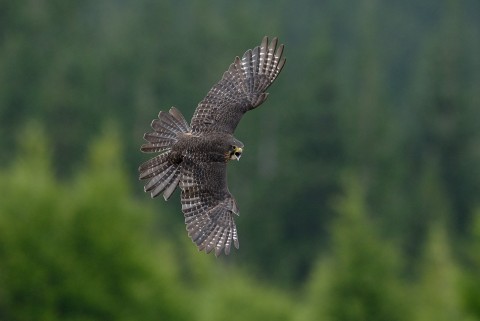Lone falcon
Blogger: Campaign Manager for the karearea (NZ Falcon) & Co leader for the Maori Party, Pita Sharples.
In 1986, the Waitangi Tribunal heard the te reo Maori claim. Claimants argued that the language was a taonga which the Crown was obliged to protect under the Treaty’s second article, and it had failed to do so. They said that if endangered birds were worth saving, so was te reo Māori, the life force of mana Māori.
The bird I have selected then as the Bird of the Year is the Karearea – also known as the New Zealand Falcon (Falco novaeseelandiae) .
The karearea is one of New Zealand’s most spectacular birds – and it is endemic to this country. The World Conservation Union classifies the falcon as a near-threatened species. Like te reo rangatira, the karearea has become threatened due to declining populations of this treasure.
The threats to survival operate on multiple levels. Selective logging of rimu and other large forest trees has reduced the available nesting habitats. Predation by cats and hedgehogs is emerging as a problem for ground nesting falcons. It is likely that stoats and rats prey on eggs and nestlings.
There are also human hazards which have caused the population to decline. Karearea have been electrocuted on power poles containing transformers; and more recently a new threat has emerged from wind farms, with the karearea colliding with the rotating turbine blades.
The karearea flies fast, with rapid wingbeats, and they are not phased by gusty winds; frequently cruising at around 100 km/hr.
Tangata whenua consider the karearea to possess special connections of a spiritual realm. This is an aspect that particularly appeals to me as it reminds me of the special care and protection we must take of our birdlife, as interconnected to our wellbeing. I relate to the karearea through the association I have to the kahu (hawk). On route to Takapau, my birthplace and tribal home, there is a particular stretch on the road, where the kahu will make itself manifest. It is, if you like, my spiritual guide.
There is another distinctive attribute of the karearea and that is its ability to foretell a change in the weather. A proverb describing this feature suggests: “Ka tangi te Karearea ki waenga o te rangi pai, ka ua apopo; ka tangi ki waenga o te rangi ua, ka paki apopo”.
If the karearea screams on a fine day it will rain tomorrow; if it screams on a rainy day the following day will be fine.

